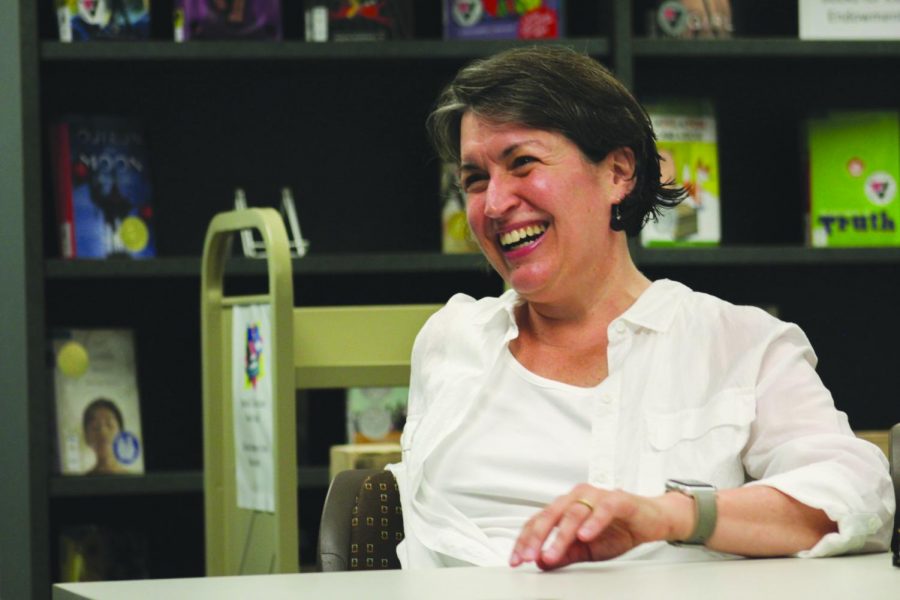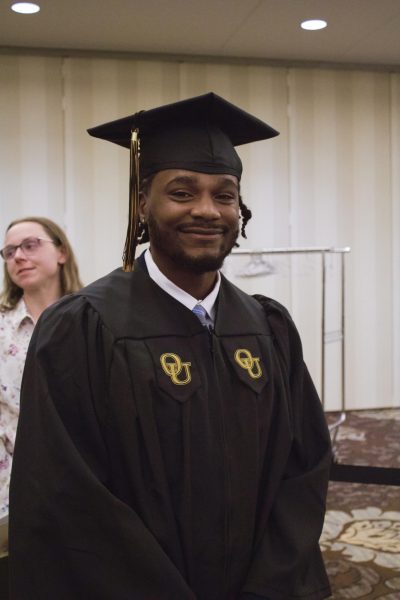Soundings Series highlights storytelling in a new light
The Oakland University “Soundings Series” is a series of speaking engagements about turning research into presentations to further engage the community.
English Professor Kathleen Pfeiffer was the most recent host of the series. Her event was entitled “Engaging the community through storytelling.”
Q: Where are you from and how long have you been working at OU?
Kathy: I grew up in Trumbull Connecticut, went to college (Emmanuel College in Boston) and grad school (Brandeis University outside Boston) in New England, and then I taught at Yale (New Haven, Connecticut) for a while before I came here. I started here at OU in 1997.
Q: As a professor of creative writing and English at OU, what is the most rewarding part of working with your students?
Kathy: I’m trying to characterize what’s been the most rewarding but I’m worried this is going to sound lame. Honestly, it’s just fun! I find Oakland students to be really inspiring. They’re hardworking and a lot of them are a lot smarter than they know. I like to be able to point out how insightful they are, to reflect their talents back in a way they haven’t seen before.
Q: Do you mentor any students?
Kathy: I welcome opportunities to mentor students and that often continues even after they’ve graduated, sometimes in a kind of continued mentorship, but often also as friends. This weekend, for example, I’m meeting up with a friend who I originally met when she was in the first grad seminar I taught here. I advised her through an academic job search and we’ve stayed in touch all these years. A few years ago, I had a monthly book club/ writing group/ meetup at my house with a group of former English majors who were all in a senior seminar together.
Q: Your “Soundings Series” event was all about how storytelling can help engage an audience. In what ways do you think the way we analyze and share research is being changed with storytelling?
A lot of professors were taught to speak in highly sophisticated terms. We have smaller and smaller audiences because fewer people can understand this type of jargon in our presentations.
So in my talk, I tried to highlight a range of examples where the techniques of storytelling can help us explain different kinds of research to non-specialists. Think about the movie “Inside Out” where the characters were personified emotions (Joy, Sadness, Anger, Disgust, Fear) and the whole plot of the movie was based on scientifically accurate and up to date research about neurological and psychological processes. Or do you remember “Schoolhouse Rock!”? Abstract grammatical concepts become Conjunction Junction, a visual metaphor for an invisible process — storytelling.
Q: You have one of the highest RateMyProfessor ratings I’ve ever seen. Do you think storytelling is helpful in engaging students in a classroom?
Yes! I try to incorporate storytelling in a variety of ways. The challenge is that the older I get, the more the culture changes. Some of my stories just don’t work anymore. Like just last week, I was explaining irony to my class, and I wanted to tell them how ironic it is that the Alanis Morrisette song called “How Ironic” has all these examples that aren’t actually ironic — once upon a time it was my favorite part of the semester, this really great fun, funny moment. Alas, nobody knows who Alanis Morrisette is anymore, and they’ve never heard the song. That bums me out. My students draw connections that go right over my head sometimes as well. I try to keep up!








